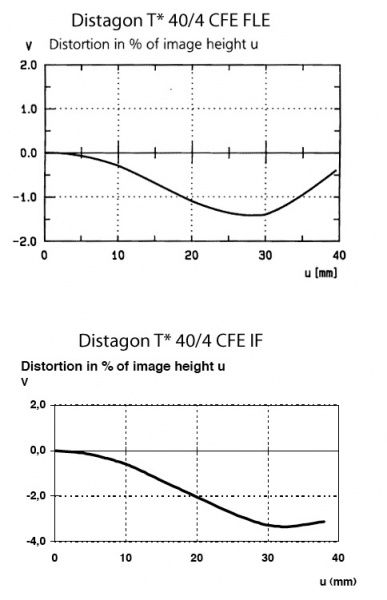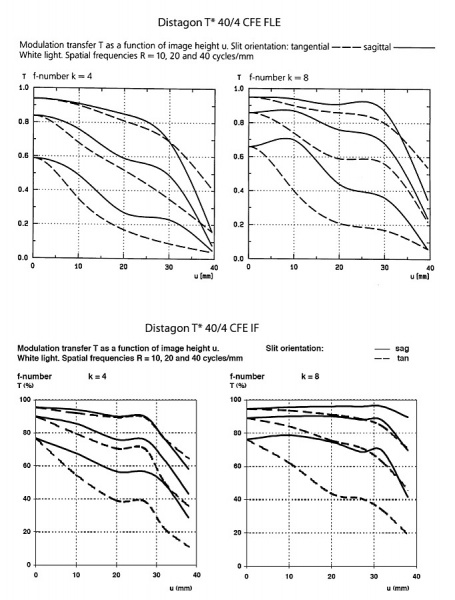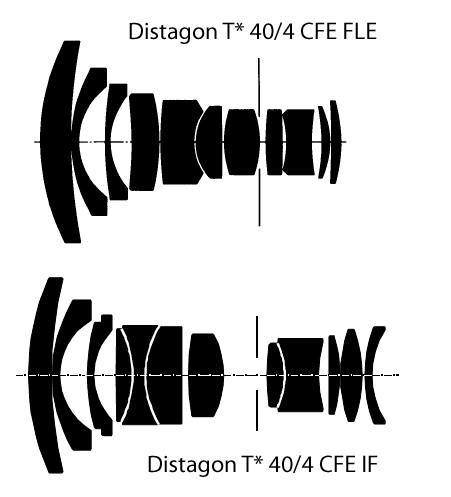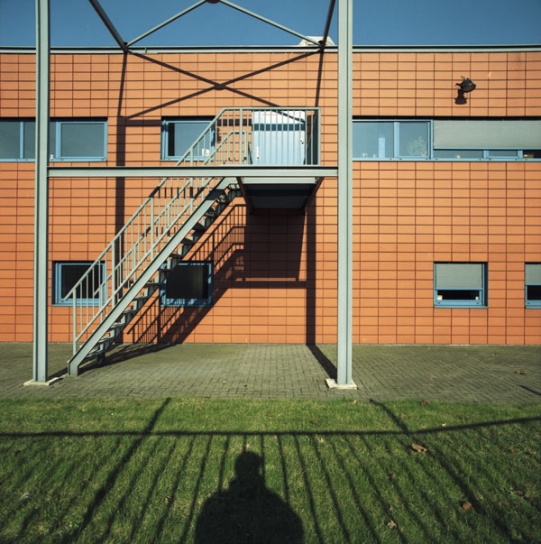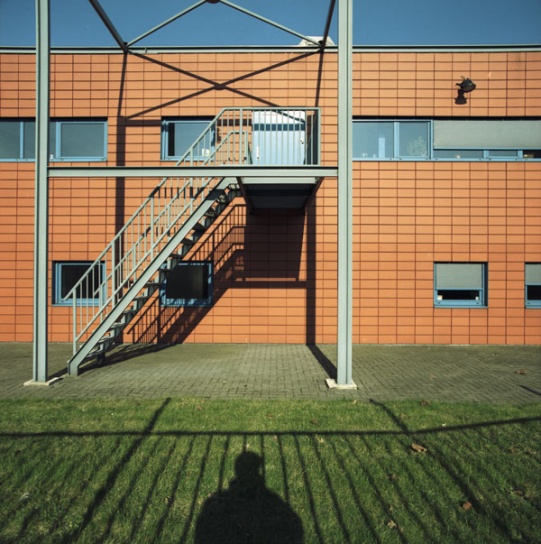I was looking at a 503cw kit with the CFV-II back and Planar 40 mm CFi lens. How does this lens compare to a distagon version and what is the relative cost for the planar. Is this lens more appropriate for all around shooting or does it matter? I cannot find any information regarding this lens or its value. I'm told by the dealer its a $4000+ lens but I cannot verify this. Any help would be appreiciated.
Medium Format Forum
You are using an out of date browser. It may not display this or other websites correctly.
You should upgrade or use an alternative browser.
You should upgrade or use an alternative browser.
Planar 40 CFi vs 40 Distagon
- Thread starter osroubek
- Start date
vandevantersh
Member
I was looking at a 503cw kit with the CFV-II back and Planar 40 mm CFi lens. How does this lens compare to a distagon version and what is the relative cost for the planar. Is this lens more appropriate for all around shooting or does it matter? I cannot find any information regarding this lens or its value. I'm told by the dealer its a $4000+ lens but I cannot verify this. Any help would be appreiciated.
IIRC, the lens is a 40mm f/4 CFE IF (Distagon) and sells for $5,873 USD.
Steve
IIRC, the lens is a 40mm f/4 CFE IF (Distagon) and sells for $5,873 USD.
Steve
That's right....which is why I think the 503CWD-II kit with this lens for $12,995 USD list price was a pretty good deal! I bought one...now I just need to get out and use it more.
Gary Benson
Eagle River, Alaska
vandevantersh
Member
That's right....which is why I think the 503CWD-II kit with this lens for $12,995 USD list price was a pretty good deal! I bought one...now I just need to get out and use it more.
Gary Benson
Eagle River, Alaska
It is..I just added up the cost of the components and it ~$19,000.
Steve
jotloob
Well-Known Member
! I bought one...now I just need to get out and use it more.
Gary Benson
Eagle River, Alaska
Hello Gary
Congratulation for your 503CWD II . I am looking forward to hear about your first experience .
I just had a look at "weather online" and can see that you are having -15C as a maximum . We have -15C as the lowest temperature in the night .
Please note , that the temperature specifications for your CFV BACK are
between 0C and +40C . (this is valid for all DIGI BACK brands)
Good luck .
Jürgen
Hello Gary
Congratulation for your 503CWD II . I am looking forward to hear about your first experience .
I just had a look at "weather online" and can see that you are having -15C as a maximum . We have -15C as the lowest temperature in the night .
Please note , that the temperature specifications for your CFV BACK are
between 0C and +40C . (this is valid for all DIGI BACK brands)
Good luck .
Jürgen
Hi Jurgen,
Yes, it has been cold here for the past week. This is our first real spell of very cold weather this winter. Where I live (closer to the mountains), it is usually about 10 degrees (F) colder than Anchorage itself. Yesterday, the low temp in Eagle River was -24F/-31C and the high was -14F/-27C. Very cold....but not as cold as Fairbanks Alaska, so I shouldn't complain too much!
In this weather, I don't normally go outside to take pictures with any of my digital cameras, especially not with an expensive digital back like the CFV-II!
I might pop outside briefly with my trusty old Nikon F2 or Mamiya C220 TLR, if the urge strikes me....I suppose the Hasselblad 501CM would be ok too. It is very beautiful out now....the trees have a heavy coating of hoarfrost and it is a clear, sunny, blue-sky sort of day. Just tough to be outside for more than 30 minutes in these temps, even with the proper winter clothing.
Hoping the weather warms up soon......
Gary Benson
Eagle River, Alaska
bradleygibson
Member
40 CFE vs 40 CFE FLE vs 40 CFE IF
What I can say about this lens is that it is superb in all respects from image quality to the feel (damping) of the focusing ring. The one area where it can be criticized is in the amount of distortion it generates -- it's quite huge at near 4%...
It's worth noting that the distortion is correctible in software with tools like PTLens.
Some time ago I was asked about the differences between the 40mm's especially with respect to the CFE IF and here is a repost of my reply:
---
The price difference [between the 40mm versions] is substantial--[asking about the difference is] a good question.
Objectively, what's 'markedly different'? The lenses themselves, for starters. The 40/4 CF and 40/4 CFE FLE have the same optical formula, MTF curves, etc. The CFE FLE has better internal baffling, electronic databus capability, new mechanical construction and a third ring to adjust the floating elements. The CFE IF has these improvements over the CF as well, minus the third ring. Instead the IF has a mechanism which automatically drives the floating elements in concert with the focus distance (optimized not just for three particular distances like the FLE, but continually throughout the focusing range). Perhaps most importantly of all, a completely new optical formula:
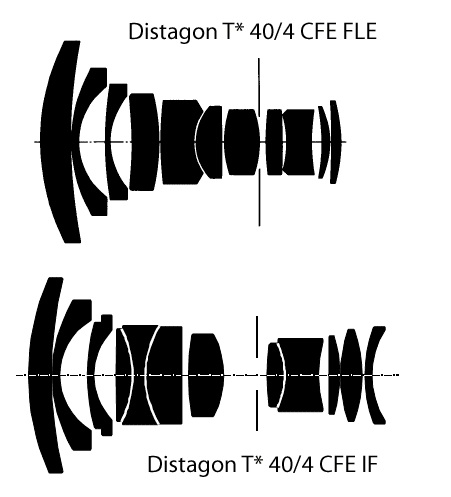
Secondly, the MTF curves also tell an interesting story. These MTF charts are measured at infinity and there is quite a difference, particularly with the high frequency (detail rendition) curve. (Speculation: As one focuses closer, one would expect to see the IF distance itself further due to its improved floating element design.) Of note to me is that the IF has significantly flatter MTF curves, but slightly more astigmatism.
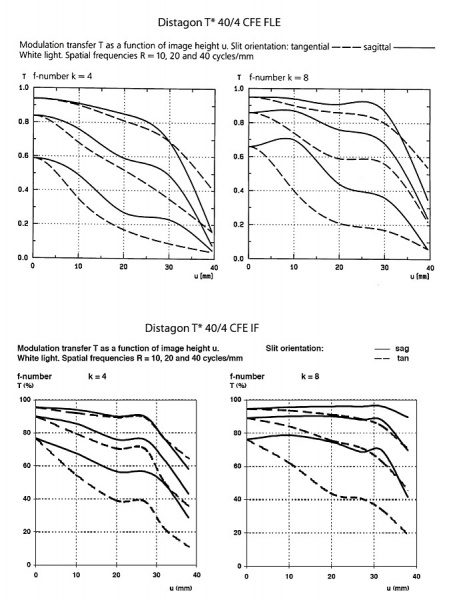
One final objective difference (this time in favor of the FLE) is the distortion. The IF's distortion is huge. There's no other way to say it. It's double that of the previous design. You won't be able to tell if you're shooting the great outdoors, but anything requiring a straight line will be a problem. It *can* be corrected in post, but if you don't/won't/can't do such things to your images, the amount of distortion this lens produces could be a deal-breaker in and of itself.
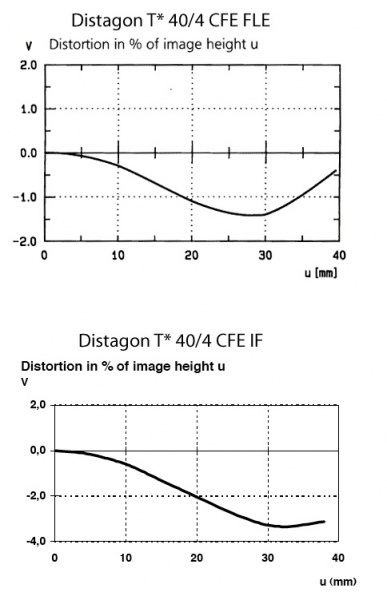
On the subjective side, I do think the lens is incredible. Worth the extra cash? It depends on your individual needs, of course. The FLE is no slouch. But just to tempt you a bit, here's what Kornelius J. Mueller (Fleischer), of Carl Zeiss at the time, had to say about the IF version:
"Within Zeiss, I was the driving head behind coming up with an improved 40 mm lens for the SLR viewfinder (even though I like the Biogon 38 very much). Compared to the previous 40 FLE, I wanted significantly more sharpness at infinity for landscape and "citiyscape" shooters, sharpness on the level of the 50 FLE - at least. I wanted to get rid of the FLE mechanics with its confusing two focus rings. I wanted a single one. And I wanted it to operate smoothly, similar to the great focusing mechanism in the Tele-Superachromat 350, which I consinder the best focusing mechanism anywhere in the photo industry. On top of that I wanted a good offering for professionals who use digital backs and enjoy the Makro-Planar 120 for their commercial photography, but needed something significantly shorter in focal length. All of this has materialised in the new Distagon 4/40 IF - the first super wide angle lens for the SLR which can sucessfully challenge the Biogon 38.
If you have the opportunity to use it with your best tripod on landscapes with very fine detail at a far horizon, the result will stunn [sic] you."
I use it for exactly this purpose, and have to concur.
---
And FWIW, I've had my Hasselblad + 40 CFE IF up in the mountains (US Pacific Northwest) during the winter (-15C, chest-deep snow etc...) for days at a time and have never had an issue with the cold...
Enjoy that winter photography, Gary!
-Brad
What I can say about this lens is that it is superb in all respects from image quality to the feel (damping) of the focusing ring. The one area where it can be criticized is in the amount of distortion it generates -- it's quite huge at near 4%...
It's worth noting that the distortion is correctible in software with tools like PTLens.
Some time ago I was asked about the differences between the 40mm's especially with respect to the CFE IF and here is a repost of my reply:
---
The price difference [between the 40mm versions] is substantial--[asking about the difference is] a good question.
Objectively, what's 'markedly different'? The lenses themselves, for starters. The 40/4 CF and 40/4 CFE FLE have the same optical formula, MTF curves, etc. The CFE FLE has better internal baffling, electronic databus capability, new mechanical construction and a third ring to adjust the floating elements. The CFE IF has these improvements over the CF as well, minus the third ring. Instead the IF has a mechanism which automatically drives the floating elements in concert with the focus distance (optimized not just for three particular distances like the FLE, but continually throughout the focusing range). Perhaps most importantly of all, a completely new optical formula:

Secondly, the MTF curves also tell an interesting story. These MTF charts are measured at infinity and there is quite a difference, particularly with the high frequency (detail rendition) curve. (Speculation: As one focuses closer, one would expect to see the IF distance itself further due to its improved floating element design.) Of note to me is that the IF has significantly flatter MTF curves, but slightly more astigmatism.

One final objective difference (this time in favor of the FLE) is the distortion. The IF's distortion is huge. There's no other way to say it. It's double that of the previous design. You won't be able to tell if you're shooting the great outdoors, but anything requiring a straight line will be a problem. It *can* be corrected in post, but if you don't/won't/can't do such things to your images, the amount of distortion this lens produces could be a deal-breaker in and of itself.

On the subjective side, I do think the lens is incredible. Worth the extra cash? It depends on your individual needs, of course. The FLE is no slouch. But just to tempt you a bit, here's what Kornelius J. Mueller (Fleischer), of Carl Zeiss at the time, had to say about the IF version:
"Within Zeiss, I was the driving head behind coming up with an improved 40 mm lens for the SLR viewfinder (even though I like the Biogon 38 very much). Compared to the previous 40 FLE, I wanted significantly more sharpness at infinity for landscape and "citiyscape" shooters, sharpness on the level of the 50 FLE - at least. I wanted to get rid of the FLE mechanics with its confusing two focus rings. I wanted a single one. And I wanted it to operate smoothly, similar to the great focusing mechanism in the Tele-Superachromat 350, which I consinder the best focusing mechanism anywhere in the photo industry. On top of that I wanted a good offering for professionals who use digital backs and enjoy the Makro-Planar 120 for their commercial photography, but needed something significantly shorter in focal length. All of this has materialised in the new Distagon 4/40 IF - the first super wide angle lens for the SLR which can sucessfully challenge the Biogon 38.
If you have the opportunity to use it with your best tripod on landscapes with very fine detail at a far horizon, the result will stunn [sic] you."
I use it for exactly this purpose, and have to concur.
---
And FWIW, I've had my Hasselblad + 40 CFE IF up in the mountains (US Pacific Northwest) during the winter (-15C, chest-deep snow etc...) for days at a time and have never had an issue with the cold...
Enjoy that winter photography, Gary!
-Brad
Attachments
Brad,
Thank you for the in depth information about these lenses! I've yet to really grasp the more technical aspects of lenses etc (such as the MTF graphs), but your observations have re-kindled my interest in learning more this aspect of photographic equipment.
I'm not sure I have the stamina to wade thru waist deep snow or the cold temps as you have in pursuit of a good photograph, so I may wait for the weather to warm up a bit more here before venturing outside with the 40mm CFE IF and the 503CWD-II or 501CM. In the meantime, I think I'll look for a good book on lenses and try to understand these MTF graphs and the software correction of distortion too.
So much to learn and I'm not getting any younger.......
Gary Benson
Eagle River, Alaska
Thank you for the in depth information about these lenses! I've yet to really grasp the more technical aspects of lenses etc (such as the MTF graphs), but your observations have re-kindled my interest in learning more this aspect of photographic equipment.
I'm not sure I have the stamina to wade thru waist deep snow or the cold temps as you have in pursuit of a good photograph, so I may wait for the weather to warm up a bit more here before venturing outside with the 40mm CFE IF and the 503CWD-II or 501CM. In the meantime, I think I'll look for a good book on lenses and try to understand these MTF graphs and the software correction of distortion too.
So much to learn and I'm not getting any younger.......
Gary Benson
Eagle River, Alaska
blowupster
Member
In 2008 the 40IF was offered with the CWD. In 2 years the second hand value of the 40IF only will be twice the value of the CWD with a 80mm CFE !
polypal
Active Member
Thanks Brad for your elaborate answer.
Please note although distortion has doubled for the IF version of the 40 mm it is still quite low for a wide angle of this focal length.
Unless critical objects with many straight lines are being photographed distortion will not be a problem.
Even Carl Zeiss can not change the laws of nature.
Please note although distortion has doubled for the IF version of the 40 mm it is still quite low for a wide angle of this focal length.
Unless critical objects with many straight lines are being photographed distortion will not be a problem.
Even Carl Zeiss can not change the laws of nature.
wbulte
Active Member
The 40 is no longer a ultrawide angle with the CFVII digital back, right? You should buy an A12 film back to take advantage of the wide side.
Yes, absolutely. The main problem as far as I am concerned of the CFV. But I am a wide-angle addict..
Wilko
blowupster
Member
Or use an adapted 41x50mm 60Mpix back.The solution for the loss of WA is quite simple buy two CFV backs and glue the sensors together
bradleygibson
Member
My pleasure, Gary!
Feel free to start a thread on reading MTF's with your questions--I'll contribute what I can, and I'm sure many others here will as well.
One place that I found helpful starting out was in the appendix section of the Canon LensWork books. They go through and explain in a fair bit of detail what different abberations look like, and most importantly, how to read MTF graphs. Between that and postings here, I'm sure you'll get the hang of it in no time...
Haha--I was thinking of calling the lens a -40/4 CFE IF for a while, since I was using it in the winter so much!
Whenever you do decide to step outside with it, I think you'll find it to be a terrific performer. Hope you're ready to fall in love!
Take care,
-Brad
Brad,
Thank you for the in depth information about these lenses! I've yet to really grasp the more technical aspects of lenses etc (such as the MTF graphs), but your observations have re-kindled my interest in learning more this aspect of photographic equipment.
I'm not sure I have the stamina to wade thru waist deep snow or the cold temps as you have in pursuit of a good photograph, so I may wait for the weather to warm up a bit more here before venturing outside with the 40mm CFE IF and the 503CWD-II or 501CM. In the meantime, I think I'll look for a good book on lenses and try to understand these MTF graphs and the software correction of distortion too.
So much to learn and I'm not getting any younger.......
Gary Benson
Eagle River, Alaska
bradleygibson
Member
My pleasure, polypal!
Regarding the distortion, I suppose whether it's "quite low" or not is subjective--I personally find it to be quite a bit. But in comparing with other medium format retrofocus designs, the Contax 645AF 45/2.8 tops out at a hair over 2% (http://www.zeiss.com/de/photo/home_e.nsf/Contents-Frame/5ED01EB620D0B1CEC12570F80033CADA), and (unfortunately) Mamiya's MTF's are nowhere to be found.
I also have the Schneider Super-Angulon 40/3.5 PQ (which covers 6x6 like the CFE IF) and it is down around 1.3% at its worst.
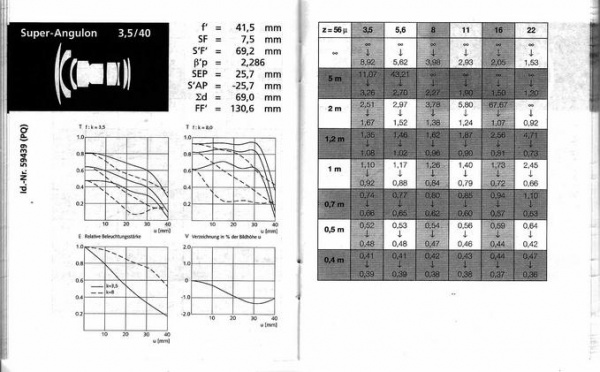
I only pointed out the distortion issue because for architecture work I can only assume this would be a big deal. My outdoor photography hasn't suffered a bit because of it.
Thanks for a terrific forum!
Best regards,
Brad
Regarding the distortion, I suppose whether it's "quite low" or not is subjective--I personally find it to be quite a bit. But in comparing with other medium format retrofocus designs, the Contax 645AF 45/2.8 tops out at a hair over 2% (http://www.zeiss.com/de/photo/home_e.nsf/Contents-Frame/5ED01EB620D0B1CEC12570F80033CADA), and (unfortunately) Mamiya's MTF's are nowhere to be found.
I also have the Schneider Super-Angulon 40/3.5 PQ (which covers 6x6 like the CFE IF) and it is down around 1.3% at its worst.

I only pointed out the distortion issue because for architecture work I can only assume this would be a big deal. My outdoor photography hasn't suffered a bit because of it.
Thanks for a terrific forum!
Best regards,
Brad
Thanks Brad for your elaborate answer.
Please note although distortion has doubled for the IF version of the 40 mm it is still quite low for a wide angle of this focal length.
Unless critical objects with many straight lines are being photographed distortion will not be a problem.
Even Carl Zeiss can not change the laws of nature.
Attachments
-
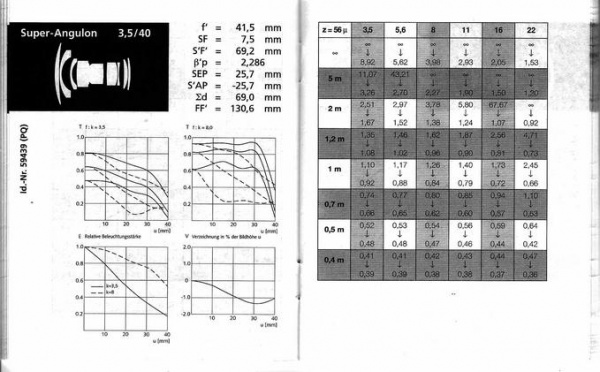 EXIF6011391-md.jpg80.5 KB · Views: 27
EXIF6011391-md.jpg80.5 KB · Views: 27
CarstenW
Member
For someone looking for a really wide MF lens with less distortion than the 40 CF IF, the 35/3.5 Distagon for the Contax 645 is another option. Well respected, although I don't know if it is as sharp as the 40. And it requires a different camera. It has distortion of 2.5% max.
By the way, I believe from what I have read that the 40 IF was designed to be corrected in software, which can be done at quite high quality. Perhaps an early precursor to the strategy adopted with the H 28mm?
Here is a recent Zeiss newsletter which explains in detail how to read MTF curves:
http://tinyurl.com/7yffk6
By the way, I believe from what I have read that the 40 IF was designed to be corrected in software, which can be done at quite high quality. Perhaps an early precursor to the strategy adopted with the H 28mm?
Here is a recent Zeiss newsletter which explains in detail how to read MTF curves:
http://tinyurl.com/7yffk6
